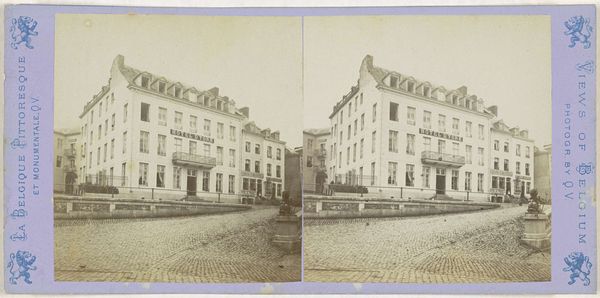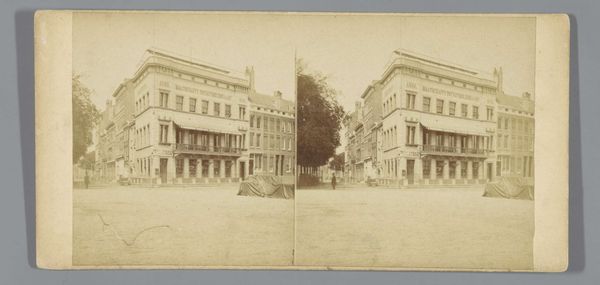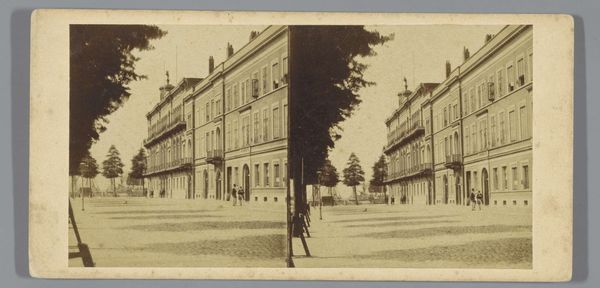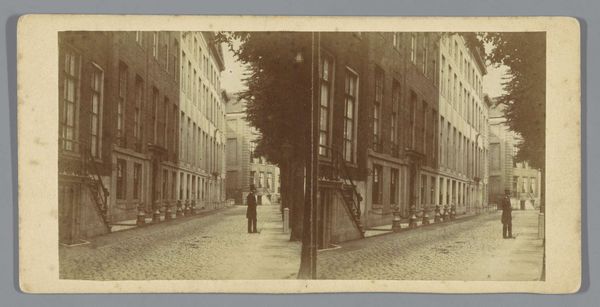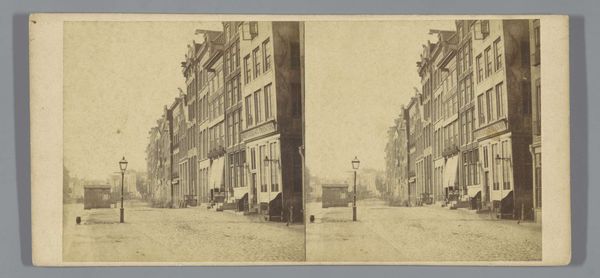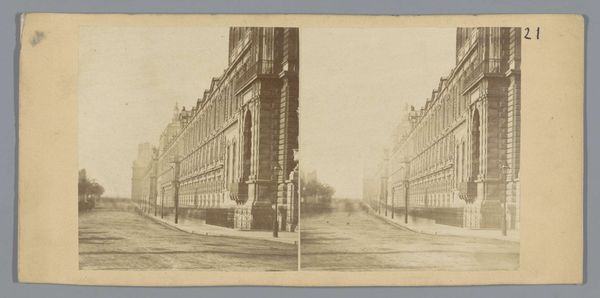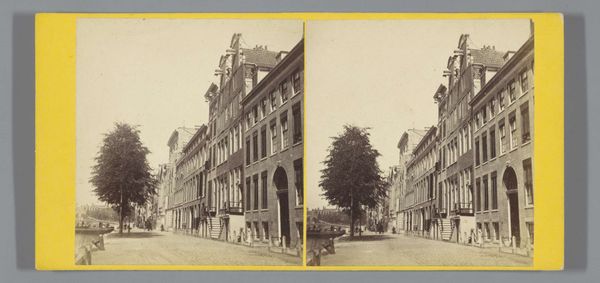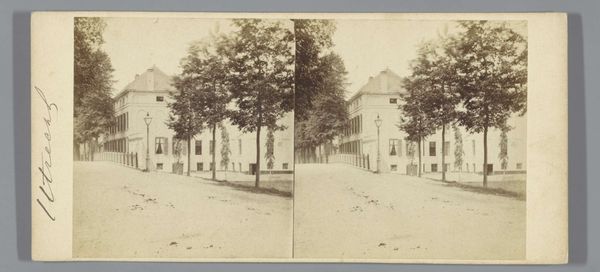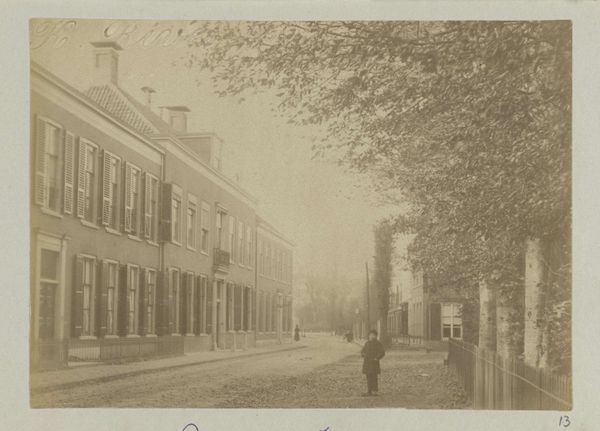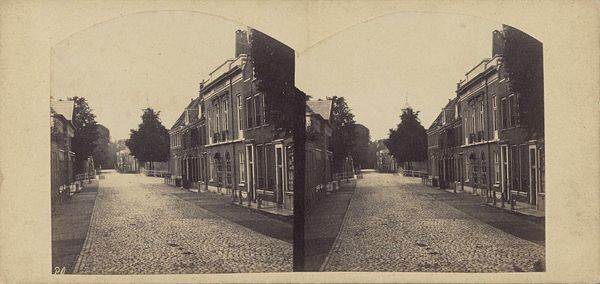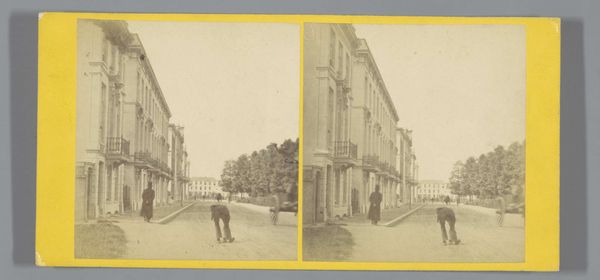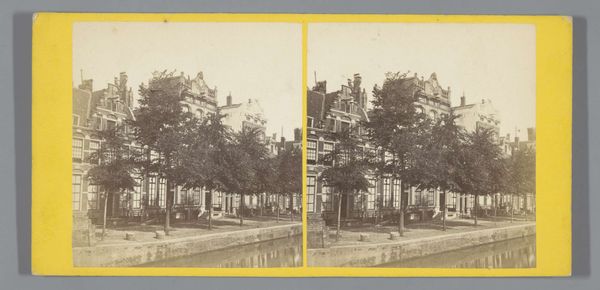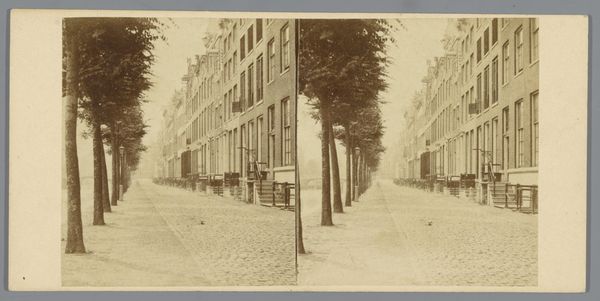
photography, collotype
#
dutch-golden-age
#
photography
#
collotype
#
cityscape
#
realism
Dimensions: height 85 mm, width 174 mm
Copyright: Rijks Museum: Open Domain
Curator: Let's discuss Pieter Oosterhuis's "Huizen aan de Prinsessegracht, Den Haag," dating from 1859 to 1865, a collotype photograph that's part of the Rijksmuseum collection. What's your initial response? Editor: The scene evokes a sense of serene quietude, even somberness. The perspective down the street, coupled with the repetitive architecture, has a mildly hypnotic quality, though the muted tones convey an aging sense of abandonment and possible decay. Curator: I agree. Looking at this through a contemporary lens, it's compelling to consider the structures along the Prinsessegracht not merely as architecture but as signifiers of power and societal structure in 19th-century Hague. Who were the inhabitants, and what socio-economic narratives do their houses tell? Editor: Exactly. The stark realism of the photograph itself—the precision in capturing architectural detail—demands an understanding of the society it depicts. How did Oosterhuis's position as a photographer influence what he chose to show and what was excluded from the frame? Who commissioned this piece and how was it used? Curator: That brings up the politics of representation inherent in photographic cityscapes of this era. Think about how these images may have been used to promote civic pride or attract investment, all while potentially obscuring underlying social inequalities and marginalized communities that existed alongside this beautiful view of order. Editor: And were the spaces accessible to all people regardless of race and gender? And did some demographics benefit at the direct expense of othered ones? Curator: Oosterhuis chose collotype for this photo. Its fine tonal range does seem well suited to the medium. What social impact would you assign to the decision to document architecture in a photograph? What did its ready distribution via the relative accessibility of photography as a medium imply for society at the time? Editor: It makes me ponder how technological advances intersect with social visibility. Photography made certain aspects of urban life more visible while inevitably obscuring others, so there’s no avoiding thinking about whose stories are being visually amplified and whose are being erased. Curator: Indeed. This piece reminds us of the vital connection between social conditions, photographic choices, and art's ongoing political agency. Editor: Agreed. The artwork certainly urges us to go beyond just observing, compelling us to consider it from an intersectional viewpoint within that specific moment in history.
Comments
No comments
Be the first to comment and join the conversation on the ultimate creative platform.
